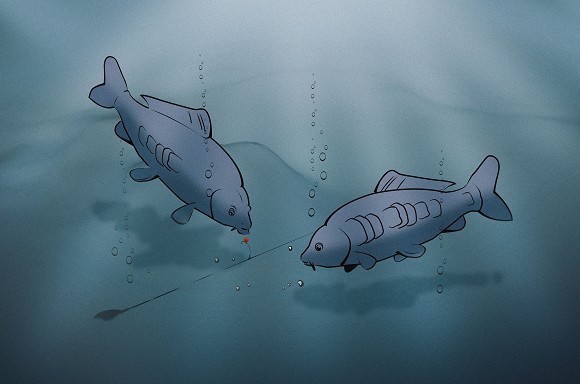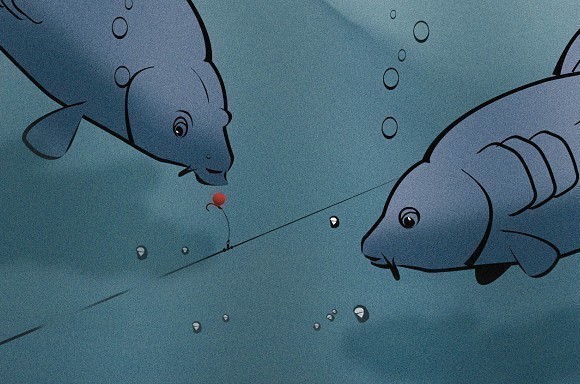
Why some rigs work better than others...
Understanding exactly what happens will make what’s to follow a damn sight easier to understand…
01 What happens first then?
Says fish farmer and all-round top angler, Ben Gratwicke: “Once the hookbait is in the mouth, if the fish hasn’t already been spooked, the palatal organ on the upper side and floor of the mouth will trap the food item for sorting. This is when the alarm bells will ring, as there isn’t only a yummy boilie in its mouth, but also a nasty sharp piece of metal. The palatal organ is highly sensitive, covered in taste buds and can enable a carp to sort bloodworm out of silt so any foreign objects are quickly sensed.”
02 Does any of that change if it’s a bottom bait or a pop-up?
Ben continues, “The only thing that would change is the positioning or perhaps the angle. With a pop-up you can have the hook prone ready for attack whereas a bottom bait is more likely to get sucked in with other bits of debris, so it is vital it has good hooking ability.”
03 Is this the reason some rigs work better than others then?
“Most definitely. Having the right hooking pattern/rig type for the job is so, so important, that’s why you will see many of the very successful anglers having their rigs absolutely razor sharp, aligned, tied and balanced to get the best result.” So it’s a case of: right rig, right job.
04 What about hook holds then?
“Once your rig is out and fishing, the number different parameters for a hooked fish are endless: size of fish, number of fish feeding at anyone time (competition for food), direction a fish approaches your rig, the make-up of the lakebed you’re fishing on, be it silt, gravel or somewhere in between and also what rig and the confidence in which a fish is feeding. A shy, careful common may just get nicked in the lip, whereas a fat old greedy mirror may wolf down your hookbait and be hooked an inch inside. All these things can play a massive role in where the fish gets hooked. Just have a think about what you have fishing on the lakebed and the surroundings you are fishing on.”
05 How much water can a 30lber move when sucking in your hookbait?
“A 30lber can move a hell of a volume of water, especially if it’s sifting through silt and loose debris after those little bloodworm,” says Ben, “but put it in a situation where a more delicate approach is needed, such as plucking a floater from the surface film and the water movement can be altered to suit. As for the exact volume, I have no idea, but in one suck perhaps up to half-a-litre…”
06 Have you got any interesting examples of a fish getting away with it?
“I once watched a fish pick-up my hookbait and rather than bolt off, it stopped still with the hookbait in its mouth, levelled itself which in-turn picked up my 2oz lead off the lakebed. It then violently shook its head, spun round and shot off leaving my rig in the process and escaping capture. The only indication I got was the line lifting about two-inches. So why didn’t I strike? Well, I was curious to see what would happen and the fish in question wasn’t very big, although after fishing the lake for the rest of the year I learnt that this particular fish hadn’t been banked for three years and I never saw it in the water or on the bank again!”
07 Do you know if it has been caught since?
“Well, last year, the lake in question very unfortunately had a major fish kill and lo and behold, this fish turned up dead and none of the new members recognised it. From what I could make out, since I left the syndicate in 1995, it had never been captured, so I make that 18 years uncaught!
“After my occurrence, I shortened my hooklink to three- to four-inches and upped the lead size and was super careful that my hooks were needle sharp. The result was a run of fish from the lake, including a personal best.”




